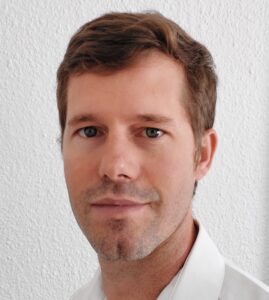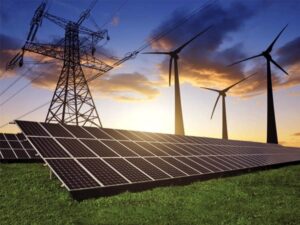In a significant move to support the development of renewable energy, South Africa last month adopted new norms to simplify and speed up the authorisation process for solar photovoltaic (PV) facilities and battery energy storage systems (BESS).
According to Sam Leyde, a senior environmental consultant at SRK Consulting, the Forestry, Fisheries and Environment minister Barbara Creecy has exempted solar PV and BESS facilities which are developed or expanded in areas of low or medium environmental sensitivity from having to obtain environmental authorisation (EA) under the National Environmental Management Act (NEMA). Sam Leyde, Senior Environmental Consultant at SRK Consulting
Leyde noted that, while the draft Integrated Resource Plan of 2023 promotes the development of renewables in South Africa subject to the requisite environmental approvals, the obtaining of such approvals has typically involved lengthy environmental impact assessment (EIA) processes of up to 18 months – making the rapid delivery of renewables difficult. He pointed out that the new norms do not apply to windfarms, which often have more significant impacts – notably to avifauna.
“These newly announced norms aim to facilitate the deployment of solar PV and BESS facilities while still upholding the objectives of NEMA,” he said. “This presents renewable energy developers and Environmental Assessment Practitioners (EAPs) with an alternative legislative process to consider during the planning and authorisation phase of a project.”
Applying the norms
The new norms apply to proposed solar PV or BESS facilities in areas where four biodiversity themes and agriculture are of low or medium environmental sensitivity. SRK Consulting environmental consultant Kelly Armstrong pointed out that the sensitivity of a proposed site is assessed by using the DFFE screening tool to generate a coarse sensitivity rating, and by appointing independent and suitably qualified specialists to verify site sensitivity in accordance with the norms.
Sam Leyde, Senior Environmental Consultant at SRK Consulting
Leyde noted that, while the draft Integrated Resource Plan of 2023 promotes the development of renewables in South Africa subject to the requisite environmental approvals, the obtaining of such approvals has typically involved lengthy environmental impact assessment (EIA) processes of up to 18 months – making the rapid delivery of renewables difficult. He pointed out that the new norms do not apply to windfarms, which often have more significant impacts – notably to avifauna.
“These newly announced norms aim to facilitate the deployment of solar PV and BESS facilities while still upholding the objectives of NEMA,” he said. “This presents renewable energy developers and Environmental Assessment Practitioners (EAPs) with an alternative legislative process to consider during the planning and authorisation phase of a project.”
Applying the norms
The new norms apply to proposed solar PV or BESS facilities in areas where four biodiversity themes and agriculture are of low or medium environmental sensitivity. SRK Consulting environmental consultant Kelly Armstrong pointed out that the sensitivity of a proposed site is assessed by using the DFFE screening tool to generate a coarse sensitivity rating, and by appointing independent and suitably qualified specialists to verify site sensitivity in accordance with the norms.

Kelly Armstrong, Environmental Consultant at SRK Consulting
“If both steps confirm low or medium sensitivity for all five themes, then the exclusion applies and a registration process can be initiated,” said Armstrong. “SRK’s experience is that projects may struggle to meet these criteria to trigger exemption, since all renewable projects have large footprints, and many cannot always be located in less sensitive areas.” She argued that while the introduction of the norm may fast-track some permitting processes, it is likely to introduce some uncertainty for developers until such time that the environmental sensitivities of a project site are verified. Registration “If a project does not need EA, it stills need to be registered through a shorter, formal process,” she explained. “The norm requires that a registered EAP must compile a Site Sensitivity Verification Report and an Environmental Management Programme to manage the impacts associated with the proposed facility. Stakeholders must also be consulted and given the opportunity to review and comment on these reports.” A registration application, including evidence of the consultation process, is then submitted to the Department of Forestry, Fisheries and the Environment, who have 10 days to register the facility or inform the applicant of any deficiencies. As with an EIA process, stakeholders must be notified of the decision and are entitled to appeal. Leyde said that the adoption of these norms has the potential to accelerate the transition to renewable energy in South Africa, improving energy security and diversity while reducing greenhouse gas emissions. “To ensure this is done without compromising our environment, it is crucial that the norms are implemented and monitored in a transparent and accountable manner,” he said. “It is possible that they could be reviewed and revised periodically, based on lessons learnt to ensure alignment with the best practice, as well as to balance the interests and needs of stakeholders.”







